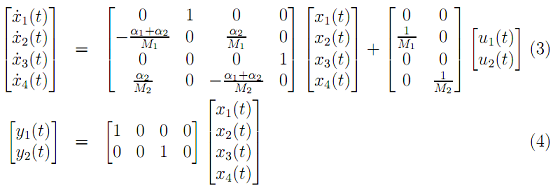Reference no: EM132296168
Assignment -
This is a single question in multiple parts. All parts are related to steady-state kinetic mechanism in Scheme 1.

1. Name the steady-state kinetic mechanism in Scheme 1.
2. Indicate for each kinetic step in Scheme 1 the kinetic rate constants.
3. Indicate which kinetic rate constants are first-order and which are second-order in Scheme 1.
4. Derive and write the analytical kinetic equations for kcat, kcat/KA, and kcat/KB using the kinetic rate constants in Scheme 1 in the absence of products.
5. Derive and write the analytical kinetic equations for KA and KB using the kinetic rate constants in Scheme 1.
6. Provide in detail a rationale as of whether or not the KA and KB represent the chemical affinity of the enzyme for substrate A and B (i.e., KD). Explain in detail, and demonstrate mathematically, which conditions in the mechanism you wrote (Scheme 1) must be fulfilled in order for KA and KB to be equal to KD(A) and KD(B), respectively.
7. Draw the double reciprocal plot of the initial rates of reaction as a function of the concentration of substrate A, and the double reciprocal plot of the initial rates of reaction as a function of the concentration of substrate B.
8. Draw the two re-plots of the slopes of the lines from the main plots you drew in point 7 against the reciprocal of the concentration of the fixed substrate in the main plots you drew in point 7.
9. Draw the two re-plots of the intercepts of the lines from the main plots you drew in point 7 against the reciprocal of the concentration of the fixed substrate in the main plots you drew in point 7.
10. For each of the four re-plots you drew in points 8 & 9, indicate how the steady state kinetic parameters can be graphically determined from the slopes and intercepts.
11. Discuss the inhibition patterns expected when product inhibition studies are performed (with both substrates and both products in all the possible combinations - i.e., saturating and sub-saturating concentrations of A or B) (you must obtain 8 patterns total).
12. Plot the pH-profiles of the kinetic parameters [kcat, kcat/KA and kcat/KB] and give a detailed explanation of their shape if:
a. A catalytic base with an intrinsic (true) pKa value of 8.0 is required for the catalytic step of conversion of the binary complex EA.
b. No ionizable groups are required for the binding of substrates A and B, and no ionizable groups are required for the catalytic step of conversion of the binary complex FB.